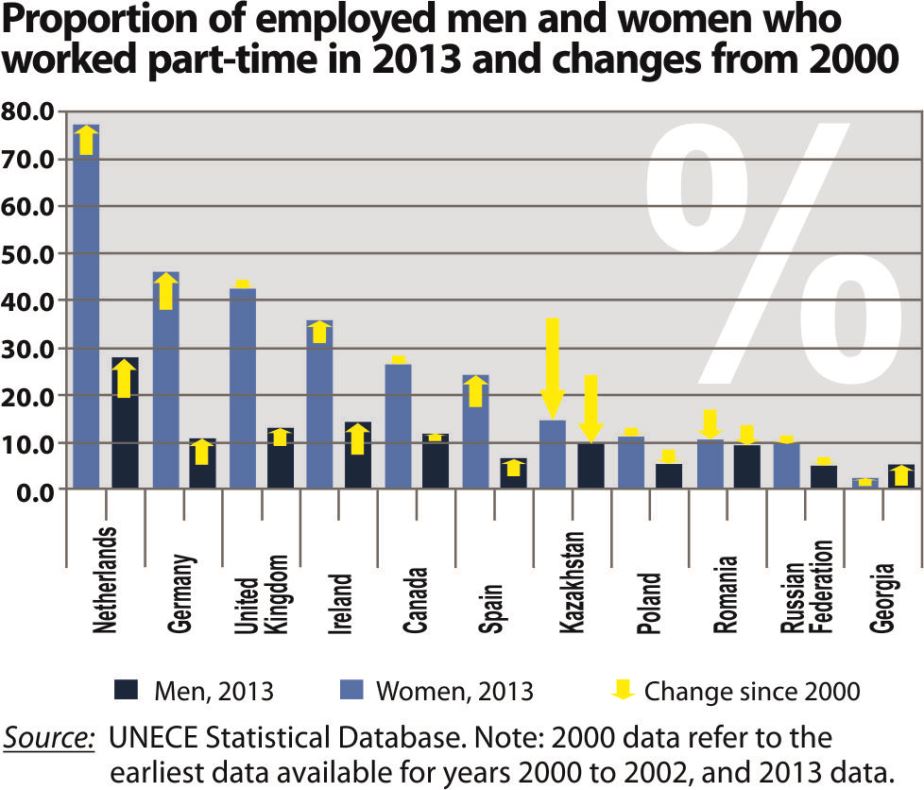Part-time work is much more frequent among women than among men, but it is also associated with young and senior workers. In 2013 in most UNECE countries, the proportion of female workers in part time employment is more than double that for men. An exception to this is Georgia, where a greater proportion of male workers are part-time employed compared to women. In Romania, the rates are very similar for men and women. The Netherlands has the highest percentage of part-time workers in the UNECE region – 77 per cent among women and 28 per cent among men.
Rates of part-time working have increased markedly from 2000 to 2013 in most countries, for both men and women. Some exceptions to this overall pattern occur in Kazakhstan, Poland, Romania and the Russian Federation, where the prevalence of part-time work amongst the employed fell for both men and women, and in Canada and the United Kingdom, where increases for men occurred in tandem with decreases for women.
The rate of part-time employment also exhibits geographic differences. Countries with increases in the prevalence of part-time working tended to be in Northern and Western Europe, while countries seeing decrease tended to be in the Eastern part of the UNECE region.
Part-time work can have both advantages and disadvantages. Whilst it can help to reconcile work and family life, and to manage working time, stress and health, there are also penalties, such as lower earnings, less training and promotion opportunities, less job security, less access to unemployment insurance and reduced pension entitlements. Part-time employment can also reflect underemployment for those who wish to work full-time but cannot do so.
